Inside Rosslyn Chapel Secrets & Mysteries | Scotland, Edinburgh
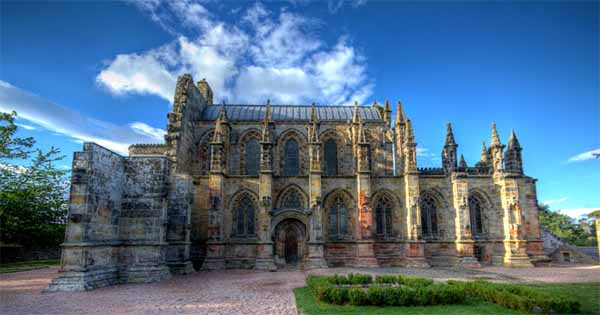
"Ancestral knowledge passed down from generation to generation" is the literal tradition of the Gaelic word Rosslyn. We are in Scotland, about ten miles from Edinburgh, in a place that the Celts already considered sacred. It was here that Count William St. Claire had one of the most enigmatic buildings of all time built, between 1446 and 1450, that is, in just four years.
Rosslyn Chapel history
Work began on September 21, 1446, St. Matthew's Day and the autumn equinox, and ended four years later, to be exact. Construction times which, given the importance of the building, were extremely fast for the era. We know that the sponsor was very closely linked to esoteric circles and to Freemasonry, which was not an isolated case in the family, because all of its members maintained, in one way or another, links with the Templars. An ancestor of the count had participated in the First Crusade, which resulted in the creation of the Order of Solomon’s Temple. In 1101, a St. Claire had married the very founder of this order, the knight Hugues de Payns. Rosslyn Chapel is also linked to a mysterious voyage in which William's grandfather, Earl Henry St. Clair, took part.
The Templar fleet
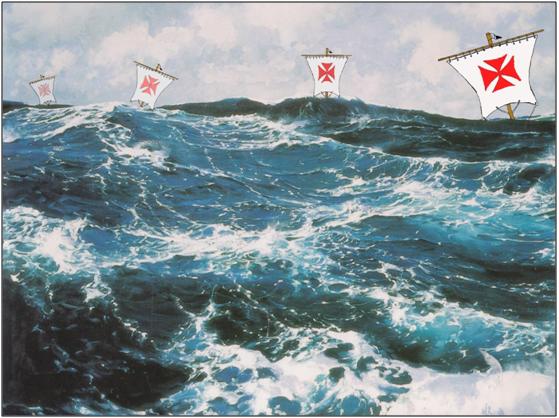
At the beginning of the 14th century, the armies loyal to the Pope completed the extermination of the Knights Templar by persecuting them throughout Europe and destroying their homes. As a result, Scotland at the time, at war with the Pope, had become the preferred destination for all followers of the order. So was it in Scotland that took refuge the Templar fleet of eighteen ships which left La Rochelle on the night of October 13, 1307 without leaving any traces?
If this were the case, it was from the Scottish coasts that the Venetian navigator Antonio Zeno could have sailed at the end of the 14th century, presumably accompanied by Henry St. Clair himself.
These men, after landing in northwestern Canada, in present-day Nova Scotia, founded the town of New Ross just 30 kilometers from Oak Island, where some claim the Templar treasure would be hidden - treasure which has never been found. Their intention was probably to create a new society based on the principles of what would become Freemasonry.
In addition to the testimony of ancient manuscripts, proof that this trip actually took place will be provided by the corn and aloe motifs that appear on the columns of the Rosslyn chapel. Indeed, these plants were unknown in Europe before the voyage of Christopher Columbus, which occurred, let us remember, about a century later.
But how could Antonio Zeno know that there was much hospitable land beyond the ocean? A recent hypothesis attests that the Templar treasure included, among other things, old maps showing the lands of the New World.
However, another point remains obscure: if it is true that in 1314 Jacques de Molay - Grand Master of the Knights Templar - and his men were condemned to the stake and their property confiscated, how is it that we continue to find traces and symbols of the Templars long after their official disappearance?
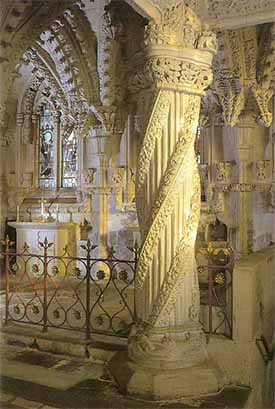
Strange matches
What helps thicken the mystery of Rosslyn Chapel is the fact that there are some very enigmatic structural analogies between it and the Masonic symbols. For example, the Apprentice Pillar features a surprising mix of Christian symbols and signs specific to pre-Christian traditions, such as dragons and the Tree of Life (Yggdrasil). From the mouths of the mythological creatures carved at the base of the pillar, branches emerge which twist to their full height and form a tree almost similar to the Yggdrasil, the great cosmic tree of Norse mythology. This pillar, drawn by William St. Clair himself, owes its name to one of the master tailor's apprentices who allegedly executed it following instructions received in a dream. According to legend the master tailor was absent to go to Rome to perfect his art, because he was unable to realize it in all the complexity of the design. But on his return, seeing the pillar perfectly executed, he was seized with a violent fit of jealousy and killed his apprentice.
Subsequently, he himself made another column called Master Pillar. As fanciful as it may seem, this episode acquires a special meaning when compared to the Masonic legend relating to the murder of Hiram Abif, architect of the Temple of King Solomon in Jerusalem, and from which the Templars were inspired to choose their name at the end of the First Crusade.
These pillars correspond to the two bearing columns, Boaz (apprentice) and Jachim (master) of the ancient Temple of King Solomon.
The Grail and other hypotheses
According to specialists who have looked at the symbols of the Apprentice Pillar, it houses a lead chest containing the Holy Grail.
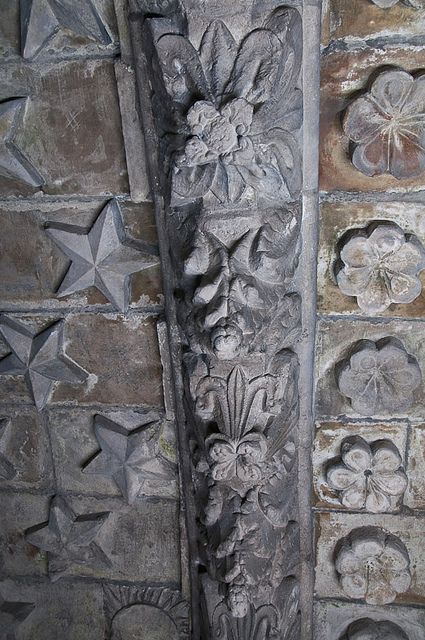
But that's not all. The overall plan for Rosslyn Chapel would be an exact copy of the one for Herod's Temple, built in Jesus' time on the ruins of King Solomon's. Additionally, the ceiling of Rosslyn Chapel is adorned with stars, roses and lilies. The stars and roses evoke the Babylonian goddess Ishtar and her husband Tammuz, while the lilies are said to be inspired by the King Solomon’s Temple. Finally, the center of a six-pointed star noted on the plans for Rosslyn Chapel would correspond to the point where, according to legend, the mythical Ark of the Covenant of King Solomon’s Temple is kept.
Another theory asserts that not only is Rosslyn Chapel not Christian, it is not even a chapel. As proof, the altar is not in the original plans and that a simple table was installed in the center of the building. Moreover, chronicles of the time record that Rosslyn was “sanctified again” in 1862. For what reason? It seems that a certain William St. Clair would have had his children baptized there, which was not appreciated by King James VI as it was not a place of worship. Hence the need to sanctify it. Indeed, some documents testify to the fact that, once the construction work was completed, the building was never used for religious rites, among other things because the nearby family castle already included a chapel.
According to this hypothesis, Rosslyn would therefore not be a chapel, but a Templar sanctuary built long after the official end of this mysterious monastic and chivalrous order, for reasons which remain obscure.
Obviously, these assumptions are not unanimous. Many researchers argue that the designs in Rosslyn Chapel are not actually corn and aloe vera, but plants that look like them. In short, there would be only simple coincidences that hide no secrets.
Another church, another city
Dan Brown, in his famous Da Vinci Code, takes his protagonists through Temple Church, in central London, before driving them to Rosslyn, the final destination of their trip. However, there is also another locality in England called Temple, which is more exactly in Gloucester. What if in the research for his book, the author guessed the name but not the site?
In the locality of Temple, in fact, local legends speak of a plan and a hiding place "between the oak and the elm". Recent excavations for the restructuring of a building in front of the church have uncovered ruins which could be Templar. Part of it looks like a staircase that goes down into the ground. Admitting that these remains do in fact date from the 14th century and that it really is a staircase, a question spontaneously arises: where does it lead?
Regardless of the various legends and theories that have followed one another over the centuries, Rosslyn Chapel remains an enigmatic construction. The Templars may have nothing to do with this, nor the Temple of King Solomon. But even though Count William St. Clair would have liked to laugh at posterity, let us never forget that reality is often beyond imagination.
King Solomon's Temple
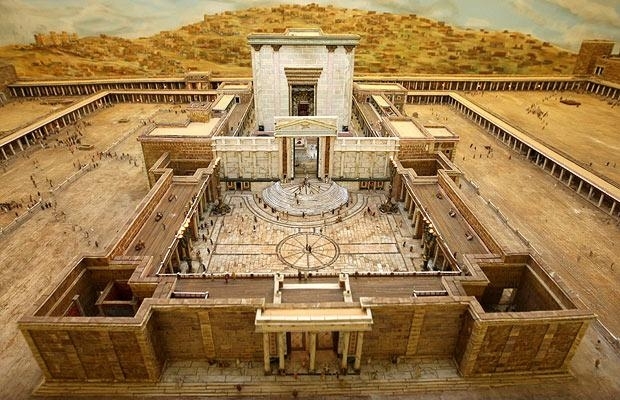
Solomon ordered the construction of the Temple to represent the cosmos. Also known as the “First Temple”, it would have been, according to tradition, the oldest Jewish temple in Jerusalem. Hiram Abif, legendary architect and founding figure in Masonic philosophy, was in charge of the work. As often happened in antiquity, the plan for the monument indicated very particular proportions, numbers and measurements corresponding to the perfect proportions according to Kabbalah. It is assumed that the Temple was 60 cubites (20 meters) in length, 20 in width (9 meters) and between 25 and 30 cubites in height (approximately 14 meters). For others, on the other hand, the Temple was 120 cubites in height (54 meters). Destroyed and rebuilt several times, all that remains today is the famous Western Wall. Inside was what is called the Sanctuary: it was covered with gold and, according to legend, housed the Ark of the Covenant. It is the most perfect example of an esoteric construction ever carried out which would also have preserved, according to recent assumptions, a great number of secrets of which the Templars were the guardians.
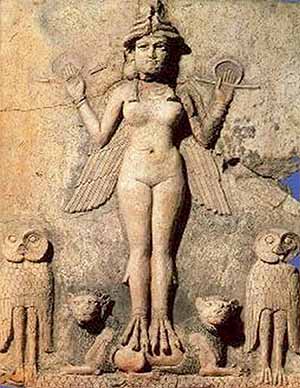
The goddess Ishtar
Mesopotamian Goddess of Love and War, she had a double valence: demon and divinity of Good. Originally a "mother goddess", she is often depicted breastfeeding. The related myths are conflicting. According to some, she is the daughter of the god of the moon and sister of the god of the sun, for others she is the daughter of the god of the sky. All, however, associate it with the planet Venus and the star, a symbol that is also found in Christian tradition in connection with the Virgin Mary. The epic of Gilgamesh attributes several loves to Ishtar. Her "victims" are the shepherd Tammuz, but also a bird, a lion, a horse, a gardener and Gilgamesh himself, who however resists her charm when he learns of the sad fate suffered by his former lovers. Another work relates the death of Tammuz so as to be reborn at the expense of her husband. The cult of Ishtar is found in Egypt, where it spread during the 18th Dynasty.









































































































































































































































































































































